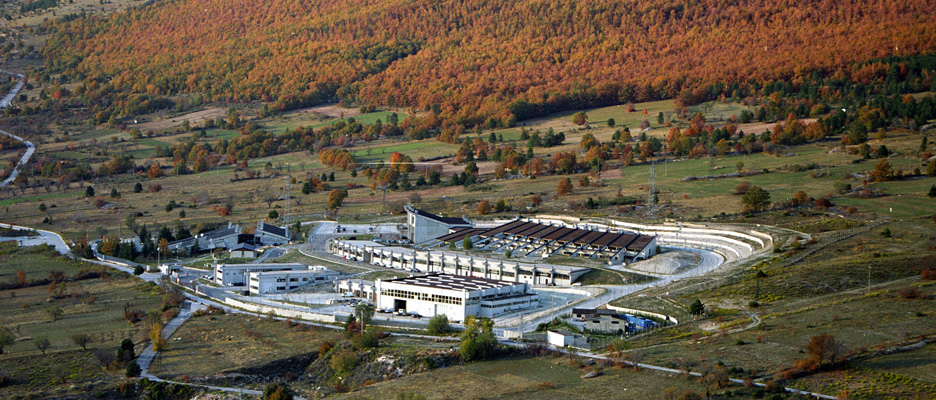
INFN Gran Sasso National Laboratory (LNGS) is the largest underground laboratory in the world devoted to neutrino and astroparticle physics, a worldwide research facility for scientists working in this field of research, where particle physics, cosmology and astrophysics meet. It is unequalled anywhere else, as it offers the most advanced underground infrastructures in terms of dimensions, complexity and completeness.
LNGS is funded by the National Institute for Nuclear Physics (INFN), the Italian Institution in charge to coordinate and support research in elementary particles physics, nuclear and sub nuclear physics
Located between L’Aquila and Teramo, at about 120 kilometres from Rome, the underground structures are on one side of the 10-kilometre long highway tunnel which crosses the Gran Sasso massif (towards Rome); the underground complex consists of three huge experimental halls (each 100-metre long, 20-metre large and 18-metre high) and bypass tunnels, for a total volume of about 180.000 m3.
Access to experimental halls is horizontal and it is made easier by the highway tunnel. Halls are equipped with all technical and safety equipment and plants necessary for the experimental activities and to ensure proper working conditions for people involved.
The 1400 metre-rock thickness above the Laboratory represents a natural coverage that provides a cosmic ray flux reduction by one million times; moreover, the flux of neutrons in the underground halls is about thousand times less than on the surface due to the very small amount of uranium and thorium of the Dolomite calcareous rock of the mountain.
The permeability of cosmic radiation provided by the rock coverage together with the huge dimensions and the impressive basic infrastructure, make the Laboratory unmatched in the detection of weak or rare signals, which are relevant for astroparticle, sub nuclear and nuclear physics.
Outside, immersed in a National Park of exceptional environmental and naturalistic interest on the slopes of the Gran Sasso mountain chain, an area of more than 23 acres hosts laboratories and workshops, the Computing Centre, the Directorate and several other Offices.
Currently 1300 scientists from 30 different Countries are taking part in the experimental activities of LNGS.
LNGS research activities range from neutrino physics to dark matter search, to nuclear astrophysics, and also to earth physics, biology and fundamental physics.


